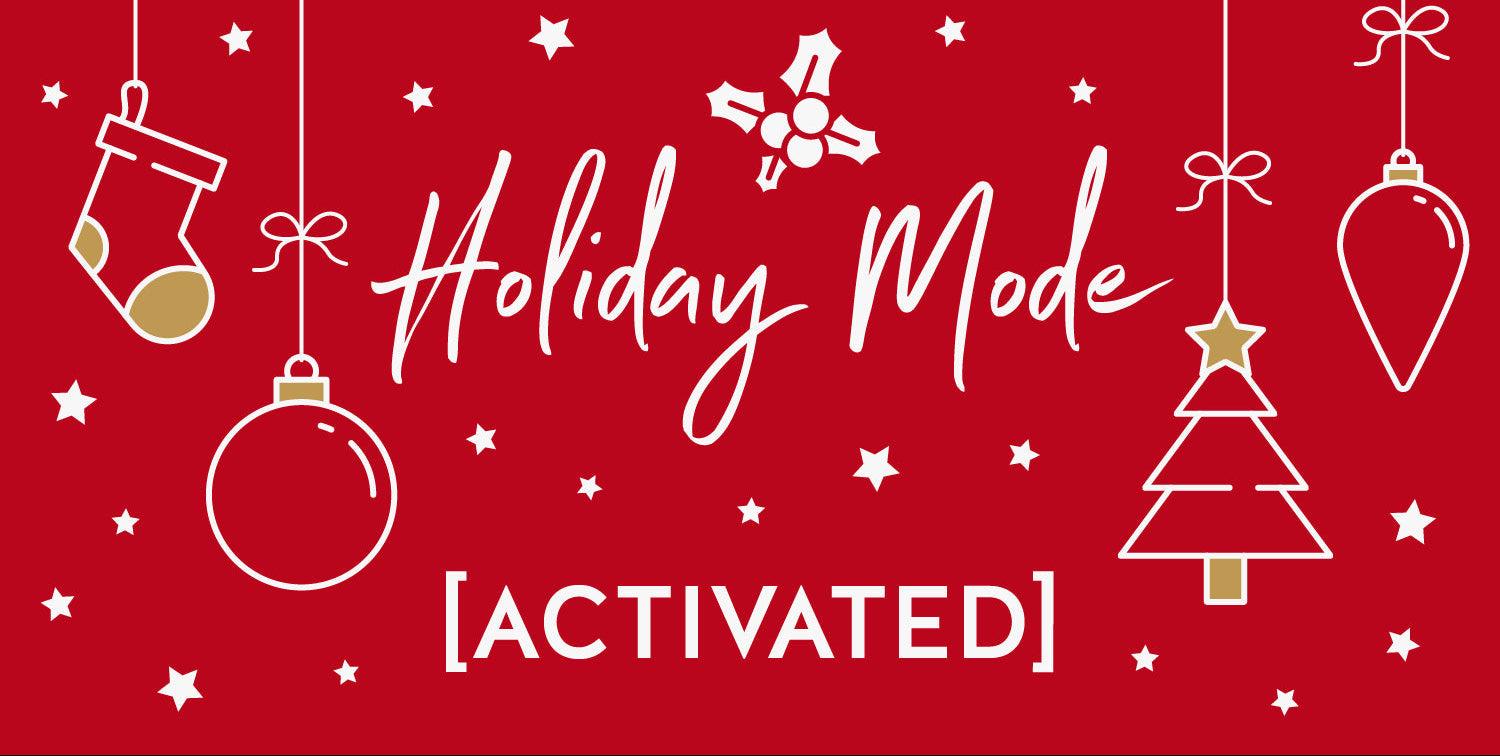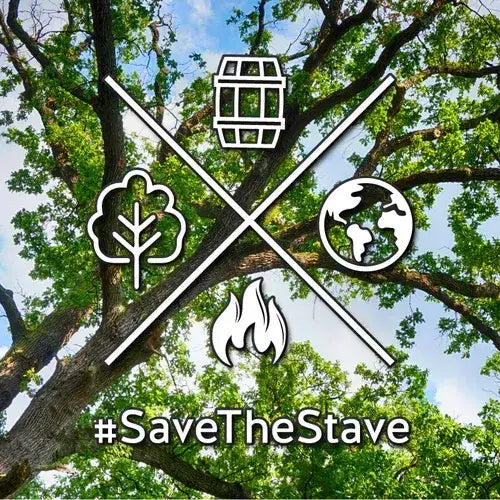INDUSTRY INSIGHTS FROM BOURBONOMICS AND ACIA
October 22nd, 2024

As we coast into Q4, it's time to reflect on the current "state of the industry." October was full of insightful events that had us buzzing, with Louisville Business First's Bourbonomics event kicking off the month on October 1st, followed closely by the Associated Cooperages Industries of America (ACIA) Convention on October 13-15, where all things barrel and wood took center stage.
Both events saw an air of caution hanging over the spirits industry. It seems everyone is asking the same questions: Is the demand change permanent or temporary? Are we in a super cycle? Is this a post-pandemic correction? Are election years just WEIRD?
Let's break it down.
GLOBAL SPIRITS SALES: MARKET CORRECTION OR DOWNTURN?

What's a super cycle?
OR IS IT A POST-PANDEMIC CORRECTION?
gen z: changing the game
For now, I think the jury is still out on this one. The data is speaking (loudly) but I think we are going to need more data to determine if this is a temporary correction or if bourbon is headed into a true downturn.
sustainability: the real mvp

What I realized after both events is that sustainability (such a trendy and timely word) is flat out confusing. As a CEO of a brand that cares deeply about leaving our planet better than we found it—there is so much more work to do. We've barely begun to scratch the surface.
sustainability and gen z
Transparency: Brands that authentically share how they produce, where they source, and what their sustainability practices look like are winning hearts (and wallets).
Ethical Sourcing: Sourcing organic or locally grown ingredients, and using sustainable packaging are driving buying decisions for Gen Z consumers.
Environmental Impact: They prefer brands that openly share their sustainability initiatives. Reducing carbon footprints, cutting down on waste, conserving water and offsetting carbon emissions are must haves these days. The brands making waves with Gen Z are the ones doubling down on things like regenerative agriculture, renewable energy, or planting trees to give back. It’s all about showing up and proving you care.
- Eco-Friendly Packaging: Gen Z expects packaging to be recyclable, reusable, or biodegradable. The more creative a brand gets with it, the better.
- Social Responsibility: Companies that show up for their communities, through fair trade and supporting local economies, are in demand.
old luxury vs. new luxury
Gen Z is less about flaunting traditional status symbols and more about authenticity and values. Here’s the split:
Old Luxury: Think exclusivity, tradition, and big names—like aged whiskey brands that focus on heritage and rarity.
New Luxury: It’s all about experiences, personalization, and sustainability—craft distilleries using local grains, small-batch production, and environmentally-friendly practices.
My favorite analogy shared at Bourbonomics was the concept of: It's the difference between a vintage, fixed-up Ford Bronco and a brand new BMW. What does luxury mean to you? Brands tapping into this shift are aligning with a younger, eco-conscious crowd that craves authenticity and purpose.


what this means for alcohol brands and gen z
Sustainability as a Core Identity: If brands want to connect with Gen Z, sustainability has to be more than just a buzzword; it needs to be baked into who they are and what they stand for.
Authenticity Over Prestige: Gen Z isn’t impressed by big names or fancy labels—they care about brands that are real about their impact. They’ll choose a smaller, genuine operation over a polished, established brand any day if it feels authentic.
Local and Community Focus: Highlighting a local connection—whether it’s through ingredients, partnerships, or production—really matters. Gen Z loves products that support local economies and tread lightly on the planet.
By leaning into this “new luxury” movement and showing they’re serious about sustainability, alcohol brands can tap into Gen Z’s craving for meaningful, authentic experiences.
the american white oak debate

No discussion of sustainability in the barrel industry is complete without talking about American white oak. There’s been buzz about a shortage, but let’s set the record straight: it’s not about the number of trees—it’s about managing our forests sustainably. Proper management ensures healthy ecosystems and a steady supply of quality wood for barrels.
Legislation is stepping in, too. The Fix Our Forest Act is aimed at sustainable forest management on public lands, and the EU’s Deforestation Regulation (EUDR) will require traceability of all wood products. For the spirits industry, that means proving where barrels come from and ensuring they’re sustainably sourced. It’s not just good practice; it’s about keeping up with global standards.
Let’s dive deeper.
legislation that's shaking things up
FIX OUR FOREST ACT
The Fix Our Forest Act is all about promoting sustainable forestry, especially on public lands, to help manage wildfires and keep ecosystems healthy. On September 24, 2024, the bill passed in the House with a key amendment: the establishment of the White Oak Restoration Initiative Coalition. This amendment focuses on protecting and restoring American white oak—a crucial resource for the spirits industry (and our beloved barrels!).
Now, it’s off to the Senate for a vote. If you want to support this initiative (and trust us, every voice counts!), now’s the time to reach out to your senators and let them know you support the bill. It’s easy—just visit senate.gov to find your state’s senators and their contact information. A quick email or phone call can make all the difference in ensuring the future of our forests and our industry.
EU DEFORESTATION REGULATION (EUDR)
The EU Deforestation Regulation (EUDR) means all wood products, barrels included, need to be traceable to their source - the actual tree. This ensures the wood used is legal and sustainable. For the spirits industry, that means stepping up transparency and meeting stricter sourcing standards.
As a proud supplier of scotch and irish whiskey barrels, Midwest Barrel Co. takes our responsibility in extending the life cycle of barrels very seriously. The barrel industry is still trying to wrap its arms around the implications of the legislation and how it will affect traceability of new barrels and exports of used, recyclable barrels. Because the American white oak tree sources stem from private (vs. public) lands, traceability to the tree and compliance under the existing legislation must be addressed collectively as an industry.
THE SUSTAINABLE HARDWOOD COALITION
The good news? The Sustainable Hardwood Coalition is leading the way.
The industry isn’t just waiting for regulations. The Sustainable Hardwood Coalition has emerged to meet these standards head-on. Their goal is to hit 95% compliance with the EUDR, showing a strong commitment to sustainable practices. For those of us with ties to the barrel, this means proving traceability, working closely with landowners, and making sure every barrel tells a story of sustainability.
net zero goals by 2050: what it means for the industry
The elephant in the room is another hot topic: Net Zero Goals by 2050. What does this even mean? Where do we start in digesting these aggressive goals?
Net Zero is about balancing the amount of greenhouse gasses emitted with the amount removed, and it’s become a benchmark goal for companies aiming to reduce their impact on the planet.
Here’s how the EU is leading the charge, and what the U.S. needs to do to catch up:
The EU’s policies set a high bar, with the EUDR and carbon pricing systems holding companies accountable.
The U.S. is making strides, but it’s more fragmented. Some states are leading, but a unified, aggressive federal approach is still needed.
For businesses, this is more than a compliance issue—getting ahead of these standards could mean a competitive advantage. Companies in the spirits industry that lean into sustainable practices can build more resilient and attractive brands, especially with Gen Z consumers.
This is a complex topic that deserves expert insight on all matters related to net zero goals (read: I am not an expert). Just know, Midwest Barrel Co. is actively working on our strategy and are excited to share more as this evolves.
what to watch for in 2025: trends & challenges

Looking ahead, here are a few hot topics we'll be tracking:
grain innovation
Expect more experimentation beyond the traditional corn, rye, and barley. Distilleries are exploring alternative grains like quinoa and oats to diversify flavor profiles and lean into sustainability. Brands like Maker’s Mark are already committing to regenerative agriculture practices by 2025—shoutout to their B Corp status!
finishing casks
The finishing trend isn’t going anywhere. We’re going to see even more creative cask options—including rum, sherry, port and cognac. And don’t forget about the exotic woods (you can learn more about experimental wood types and barrel aging HERE), as brands look to elevate flavor profiles and cater to the adventurous palate.
tariff watch
With potential tariff increases from 25% to 50% on EU exports looming (expiring March 31, 2025), American producers could face some real price hikes in Europe. This may push distilleries to re-strategize their international reach.
east coast port strike
The dockworkers strike might have been postponed, but it’s still a situation to keep an eye on for early 2025. If it escalates, it could once again disrupt supply chains, making contingency planning key for producers reliant on those ports.
In Summary: The Road Ahead


The spirits industry is facing a period of change—whether it’s market cycles, generational shifts, or regulatory pressures. Brands that can adapt, stay transparent, and truly commit to sustainable practices are the ones that will stand out in 2025 and beyond.
The good news? There’s plenty of opportunity to make an impact. Here are a few ways you can get involved:
Reach Out: Contact your senator and encourage them to pass the Fix Our Forest Act. Your voice matters, and it could be the push this legislation needs to move forward.
Join the Movement: Consider becoming a part of the Sustainable Hardwood Coalition. It’s a powerful way to contribute to the industry’s sustainability efforts.
#SaveTheStave® Initiative: Want to make a difference today? We’d love to chat with businesses interested in our #SaveTheStave® initiative. Over the last 5 years, we’ve partnered with the Arbor Day Foundation to plant more than 40,000 trees, and we’re expanding this initiative in 2025. We’re on the hunt for founding partners to join us in ramping up reforestation efforts—together, we can make a real dent!
Support Local: And of course, continue to support your favorite distilleries, wineries, and breweries. The more we rally behind them, the stronger our industry will be.
There’s a lot of work to do, but with the right steps, we can all play a part in shaping a sustainable and successful future for the spirits industry.
Let’s raise a glass to staying ahead of the curve!

ABOUT THE AUTHOR:
Jessica Loseke
👩🏻🤝👨🏼 Co-Founder & CEO of @midwestbarrelco
👨👩👦👦 Mom of✌️boys
🐶 Dog Mom to @shopdogwillett
💡Lover of learning, ideas & potential💡
💪 Pilates & ☕️Lattes
👉Enneagram 8






